Mammals of South AsiaAfghanistan, Pakistan, India, Nepal, Bhutan, Bangladesh, Sri Lanka
El precio original era: $35.84.$30.46El precio actual es: $30.46.
Autor/a
En stock
El precio original era: $35.84.$30.46El precio actual es: $30.46.
Peso
0.4 kg
Dimensiones
14 × 22.8 cm
Idioma
Inglés
Formato
Rústica
Páginas
176
Fecha de publicación
enero 2020
Publicado por
Lynx Edicions
Autor/a
Descripción
Mammals of South Asia ofrece una visión actualizada y ricamente ilustrada de todos los mamíferos registrados en el sur de Asia. Cubre Afganistán, Pakistán, India, Nepal, Bután, Bangladés, Sri Lanka y las islas cercanas. Esta referencia compacta pero autorizada está pensada para naturalistas, viajeros y aficionados a la fauna silvestre que deseen comprobar rápidamente qué especies habitan en la región y cómo identificarlas.
Este libro forma parte de la colección Lynx Illustrated Checklists, creada a partir de la enorme cantidad de datos, ilustraciones y mapas reunidos para la serie Handbook of the Mammals of the World, destilados en volúmenes útiles y portátiles para acompañar su visita a un destino específico. Aunque no es una guía de campo tradicional, este libro proporciona tanto a residentes como a visitantes de la región un recurso fácil de usar que les permite conocer rápidamente las 540 especies de mamíferos presentes en la zona.
Características principales:
- 540 fichas de especies que incluyen nombres comunes y científicos, estatus en la UICN y notas sobre especies introducidas o domesticadas.
- Descripciones concisas del hábitat, datos de distribución, rangos altitudinales y medidas biométricas clave para cada especie.
- Mapas de distribución actualizados, con las especies terrestres en verde y las marinas en azul.
- Ilustraciones de alta calidad para cada especie, con imágenes adicionales en muchos casos para mostrar diferencias de sexo, raza o coloración.
- Listas de las principales áreas protegidas donde se pueden observar mamíferos característicos.
Desde tigres, elefantes y rinocerontes hasta pangolines, delfines y murciélagos frugívoros, Mammals of South Asia resalta la extraordinaria diversidad de la fauna de la región en un formato fácil de usar y apto para el trabajo de campo.
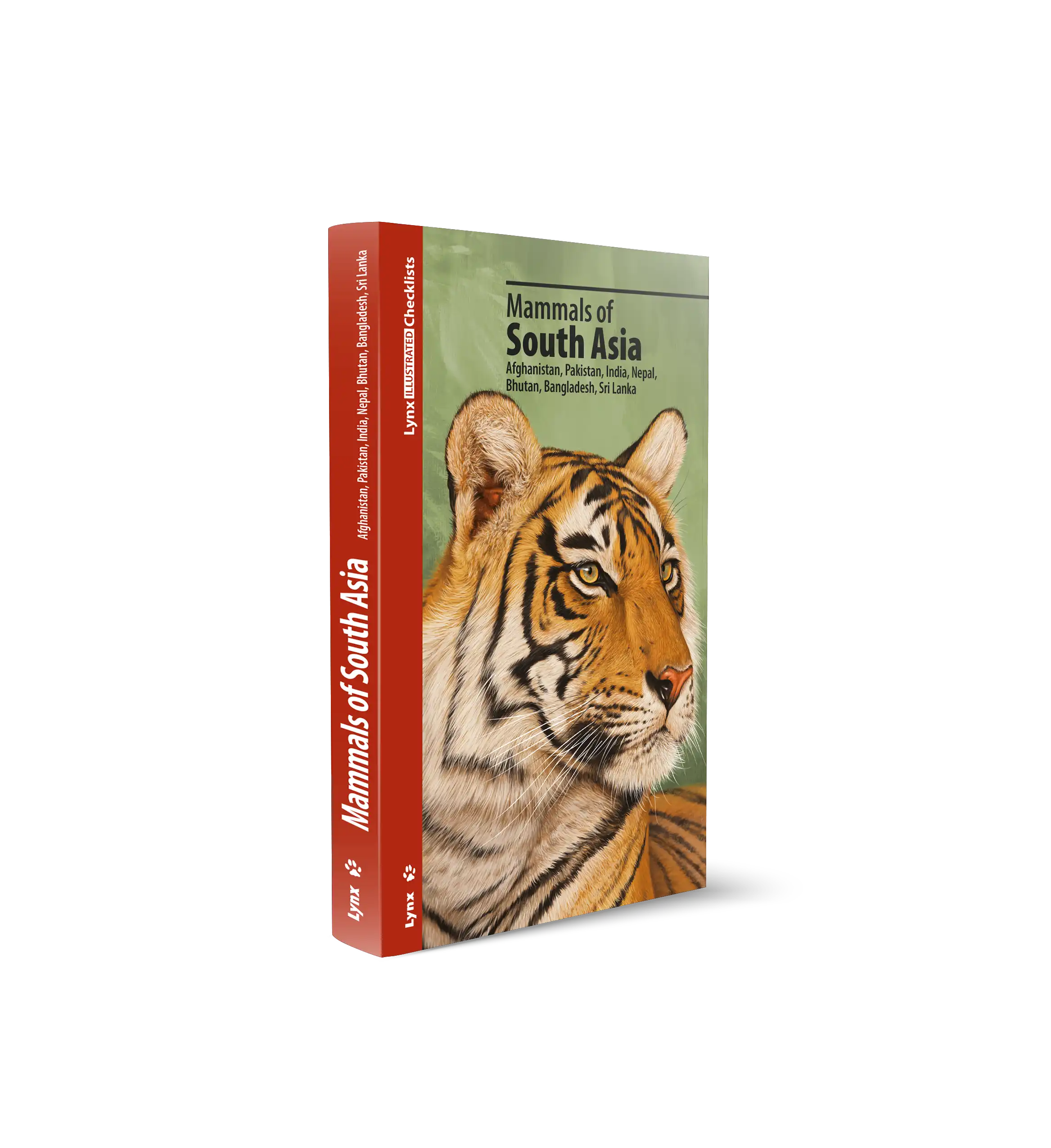
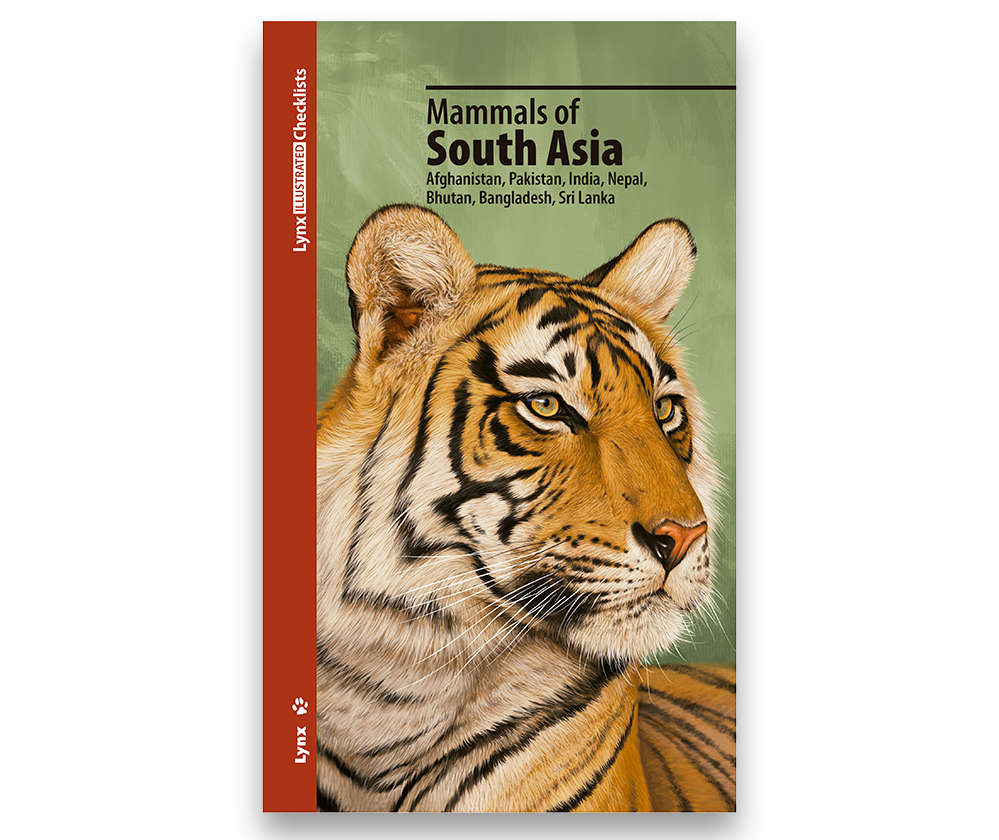
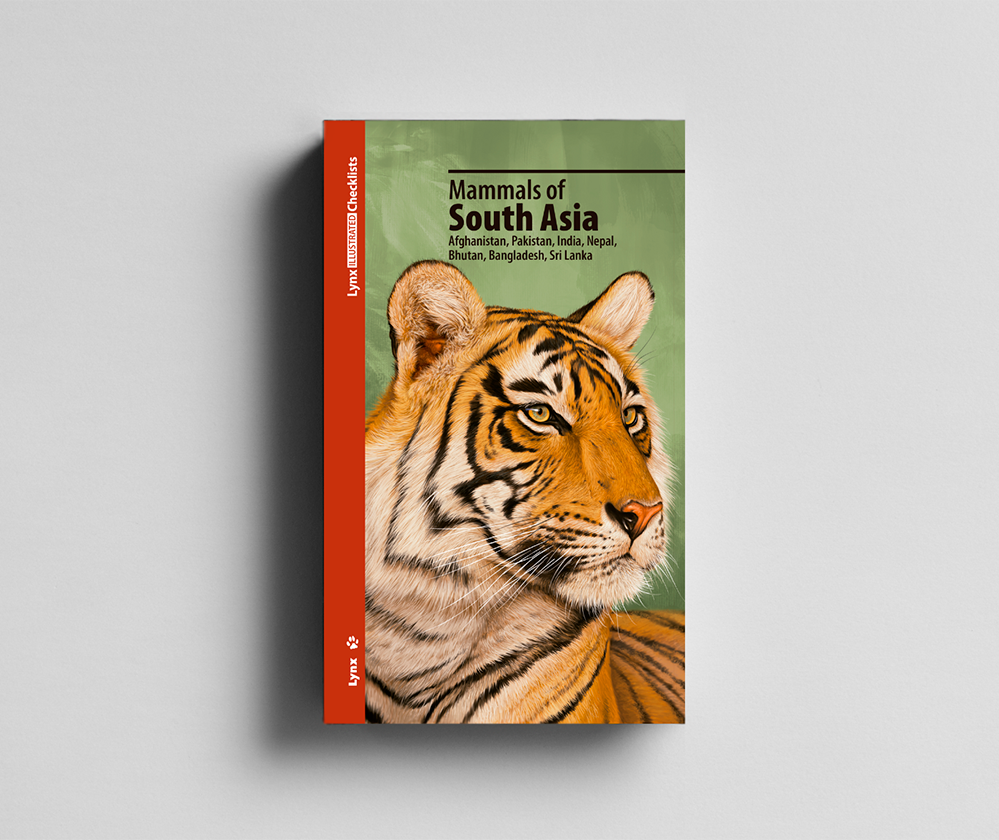
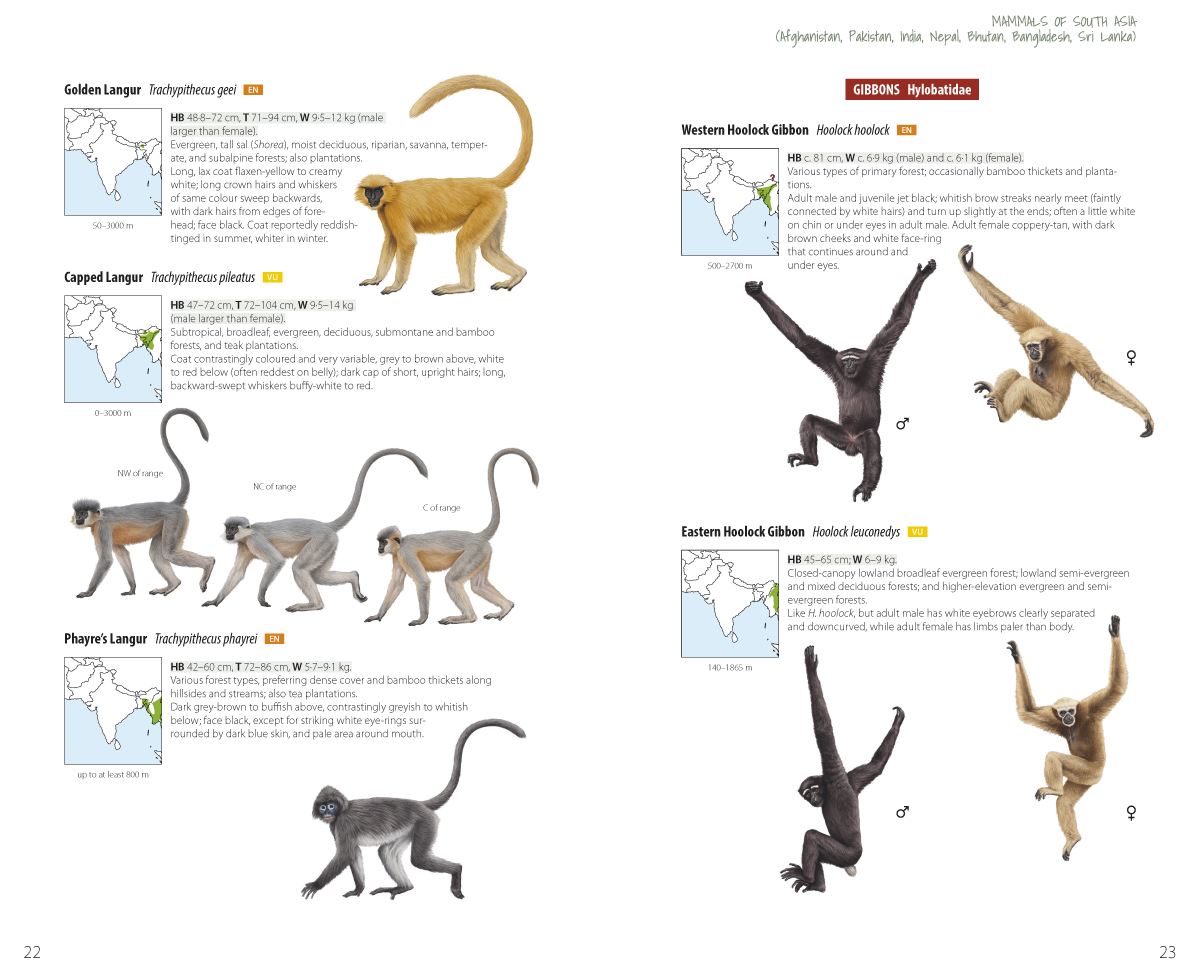
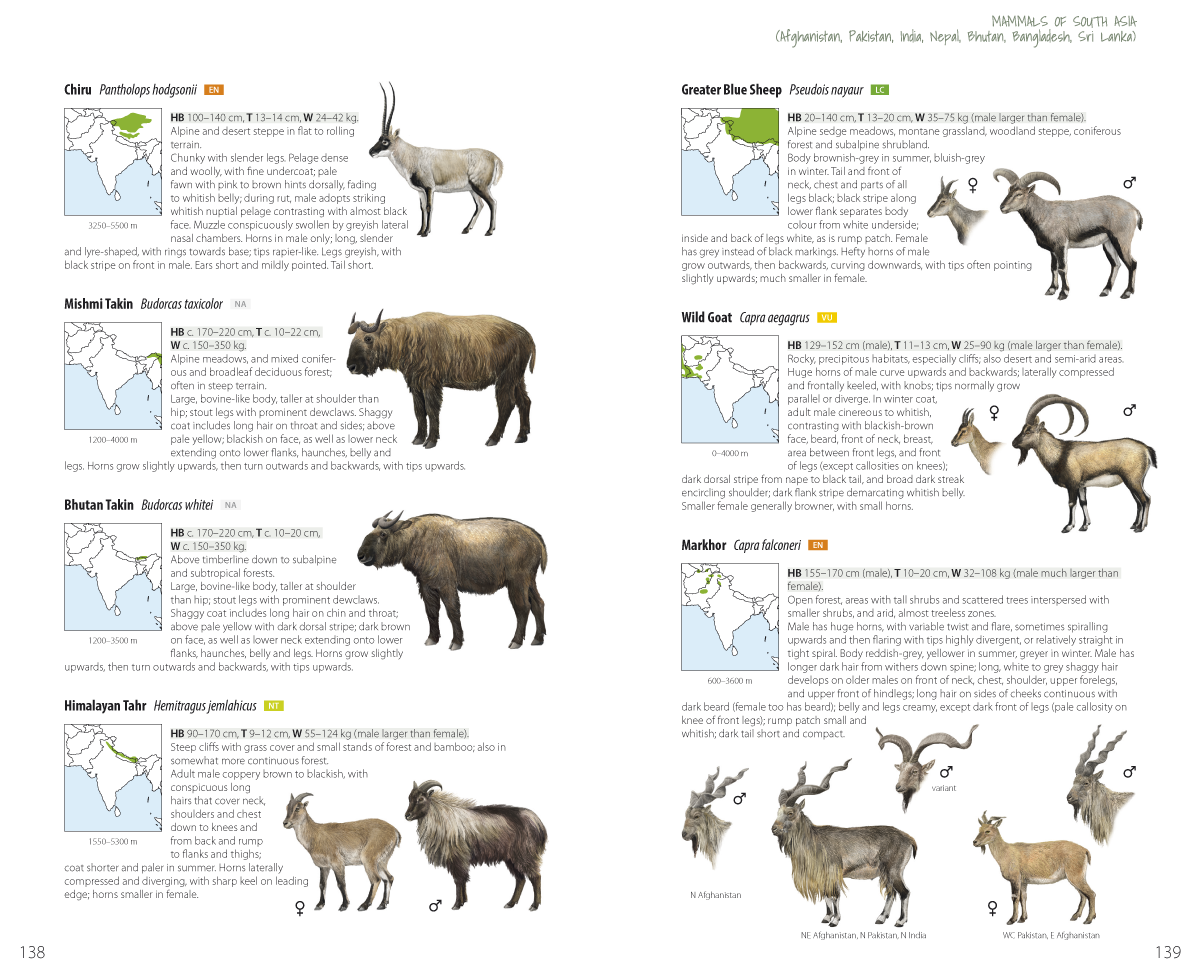
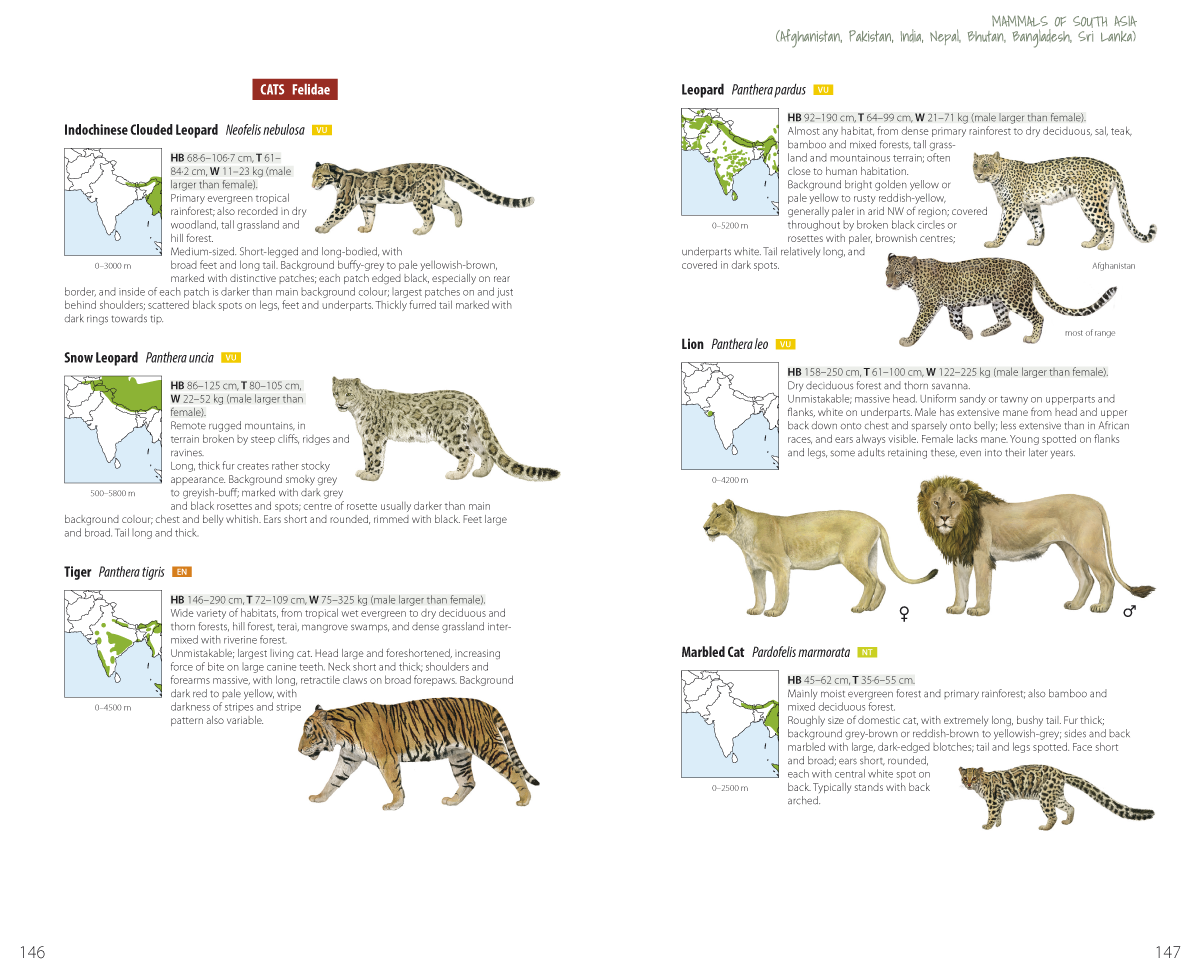
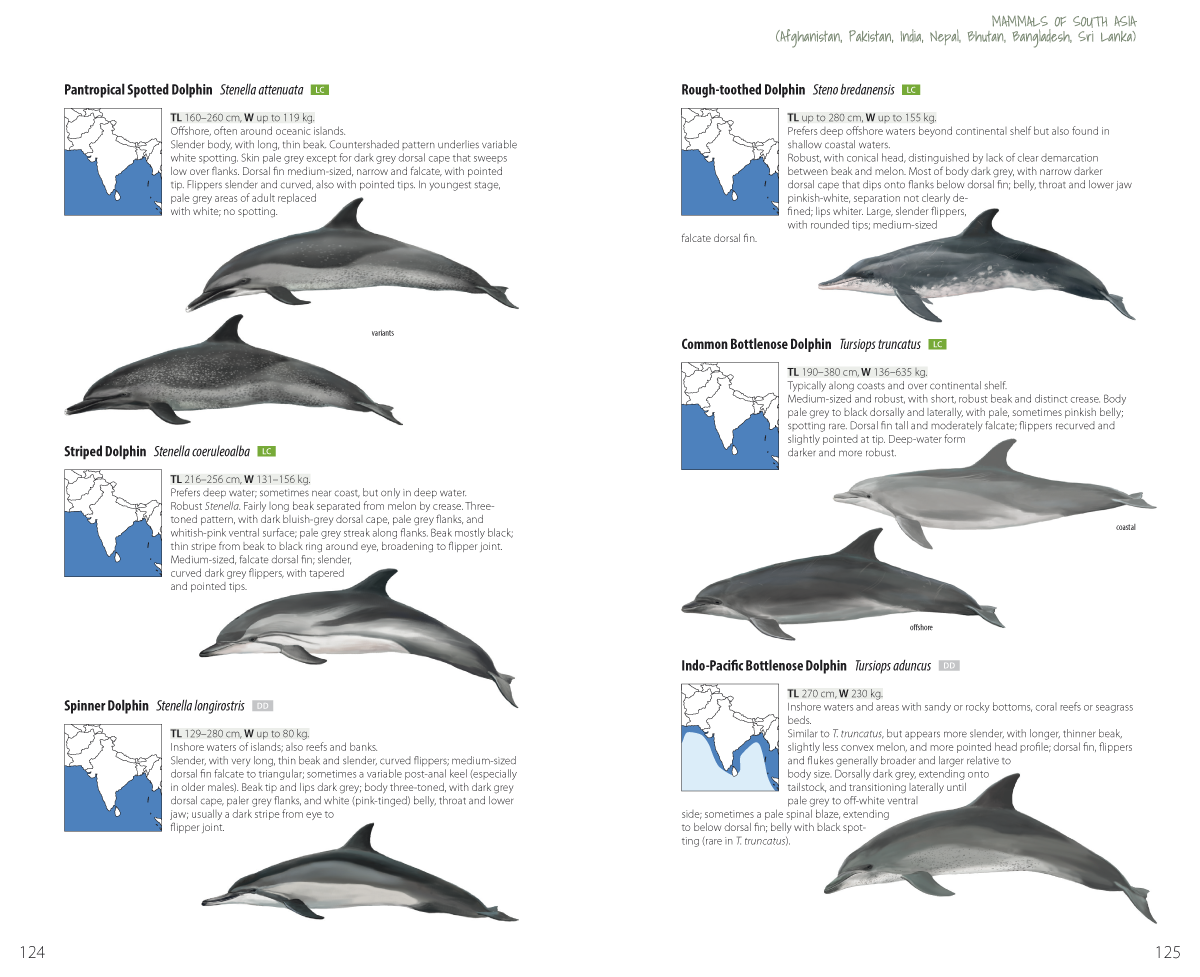
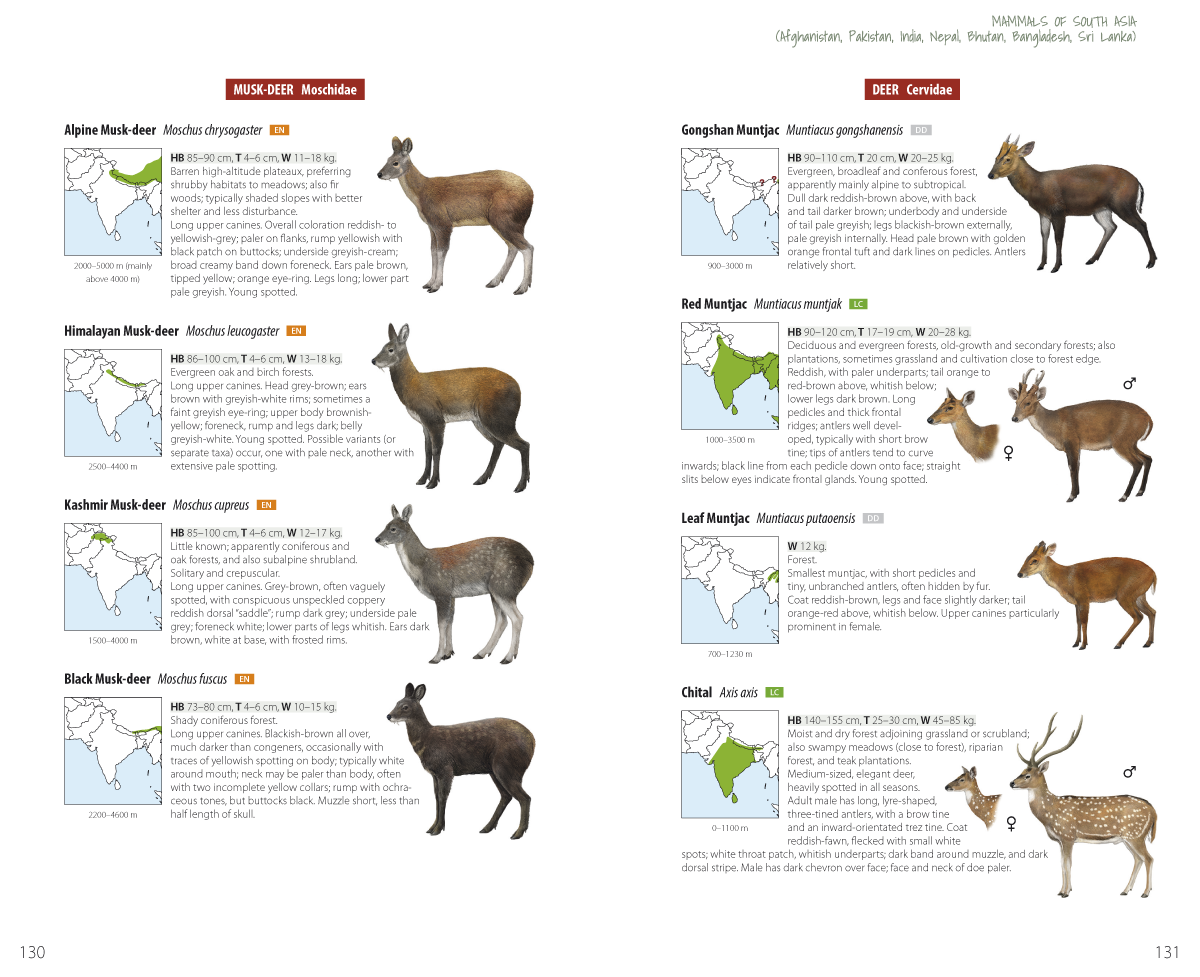
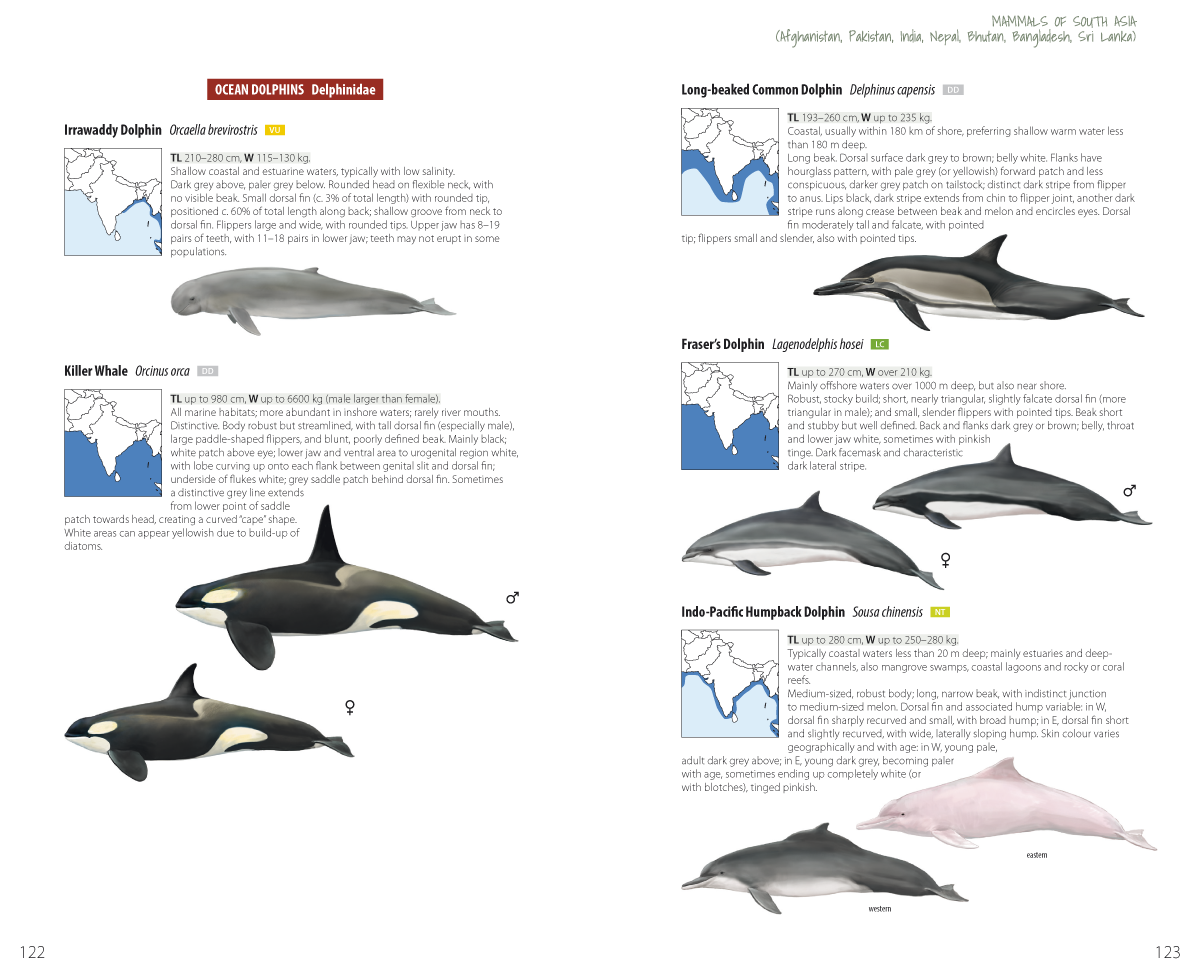


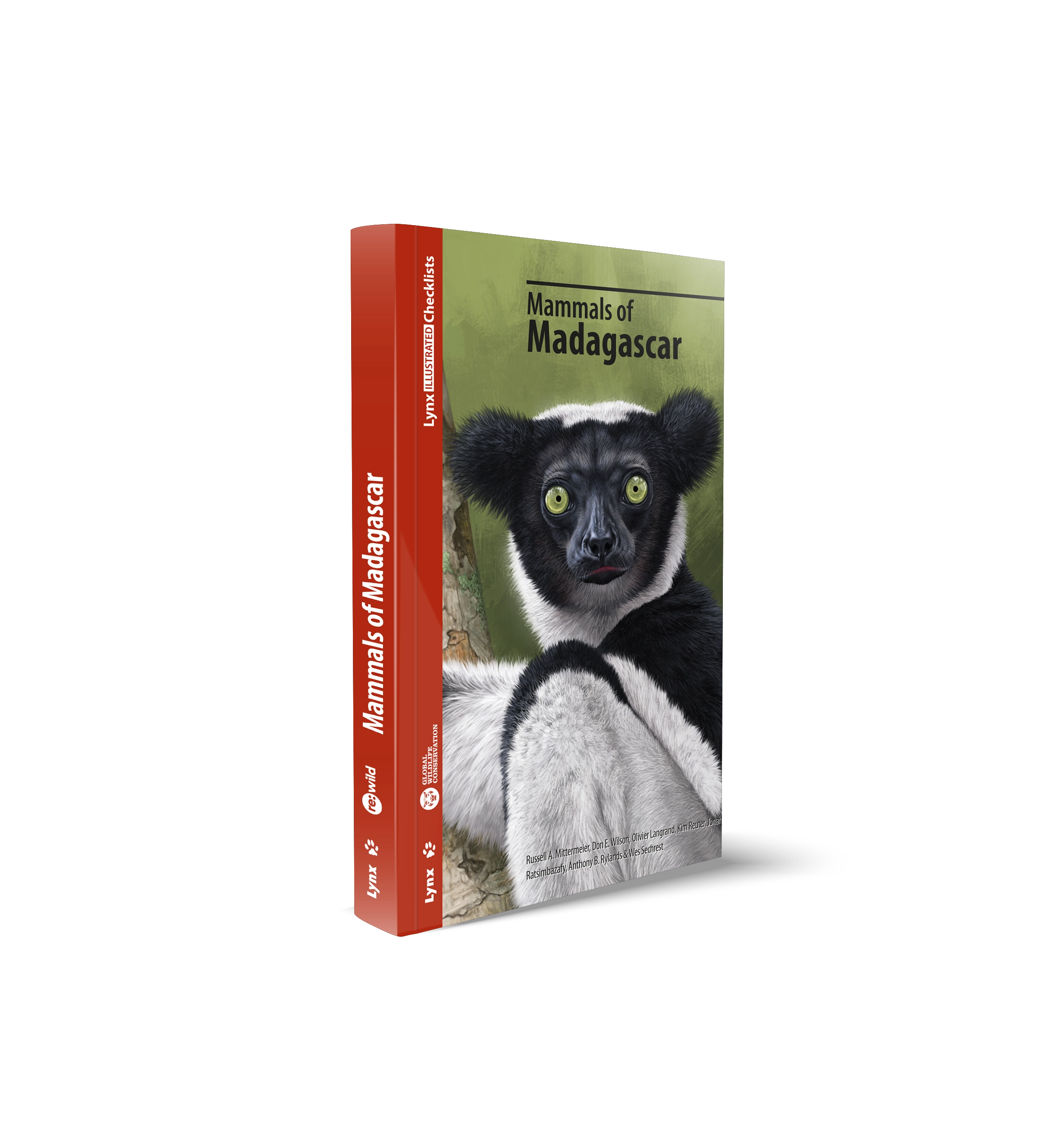

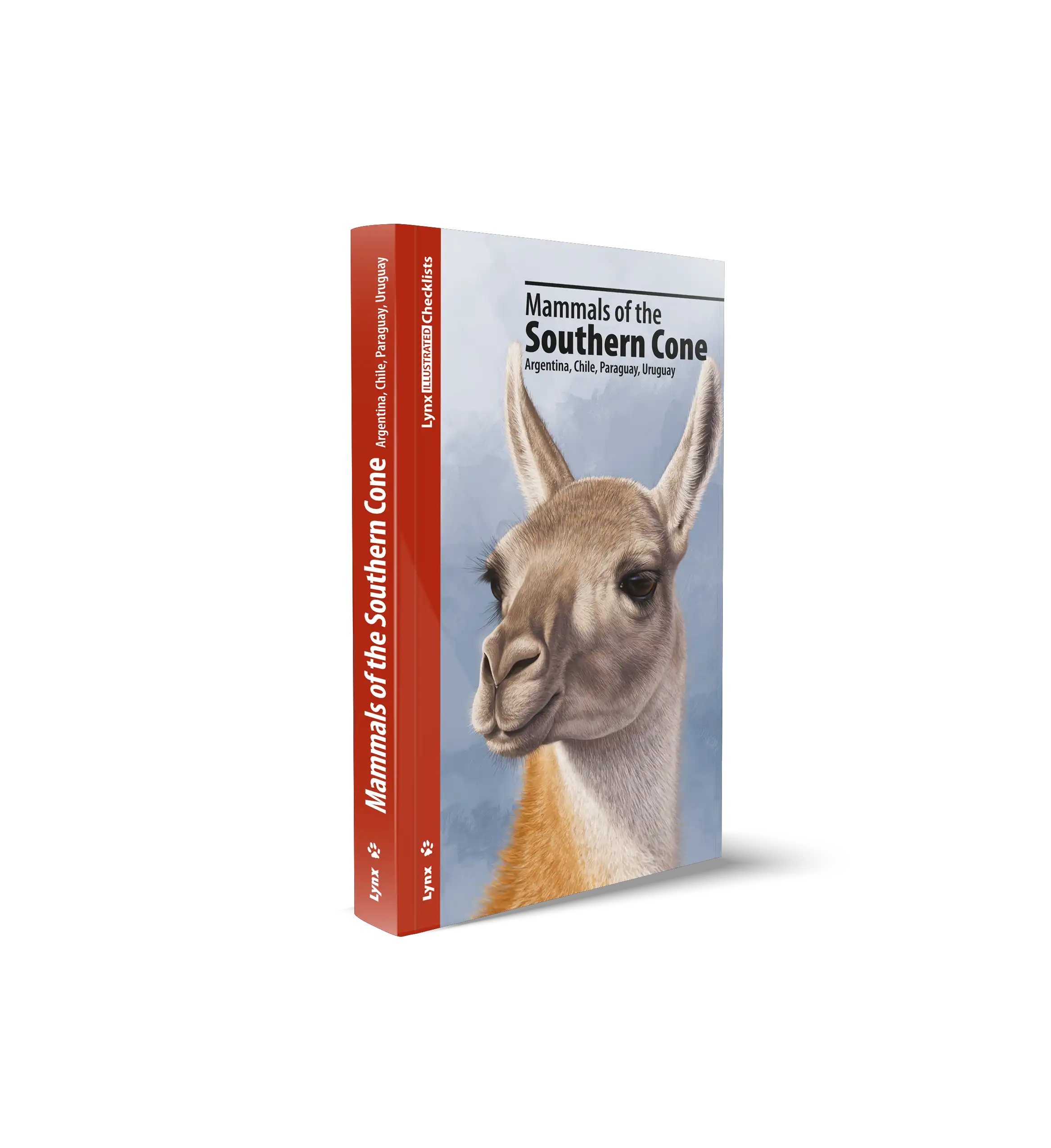

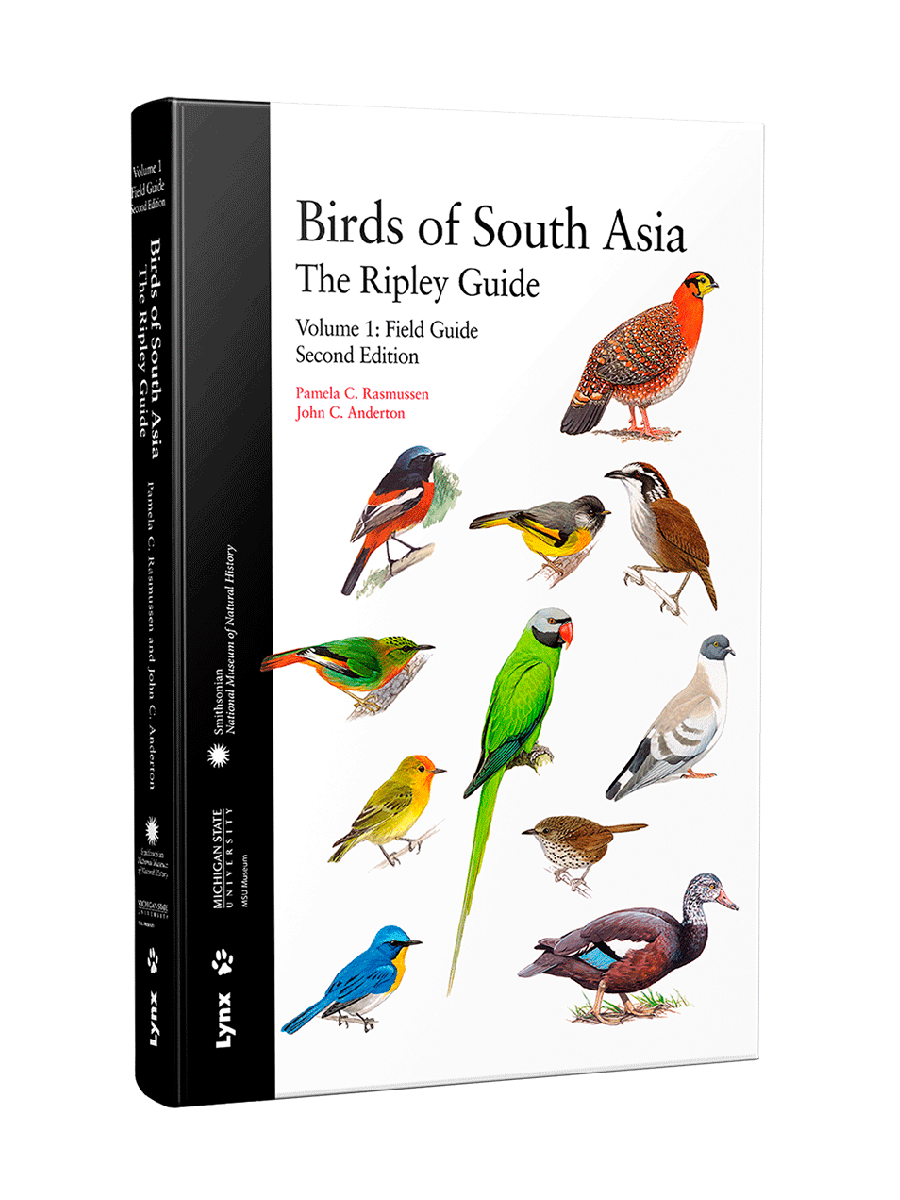
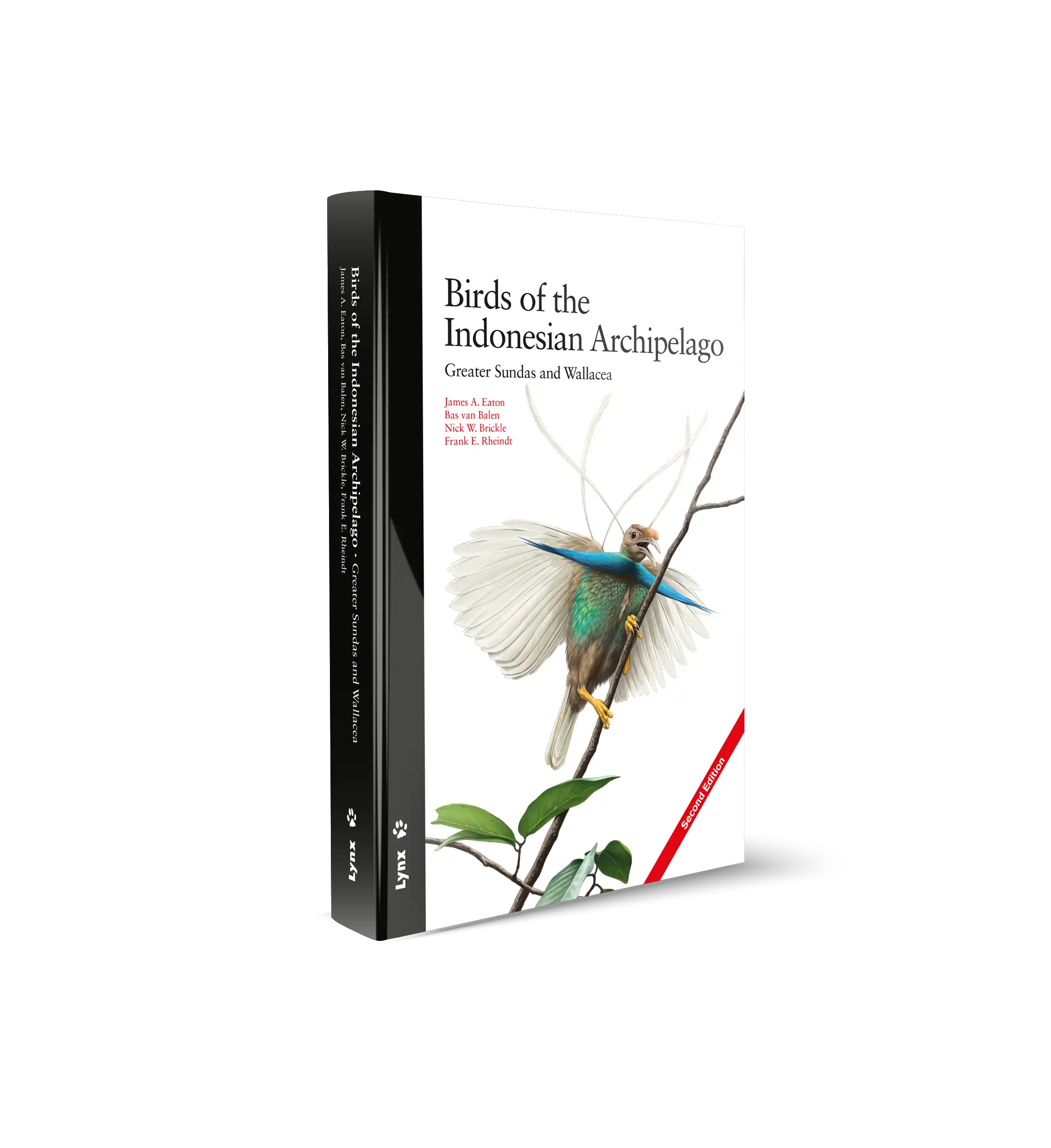

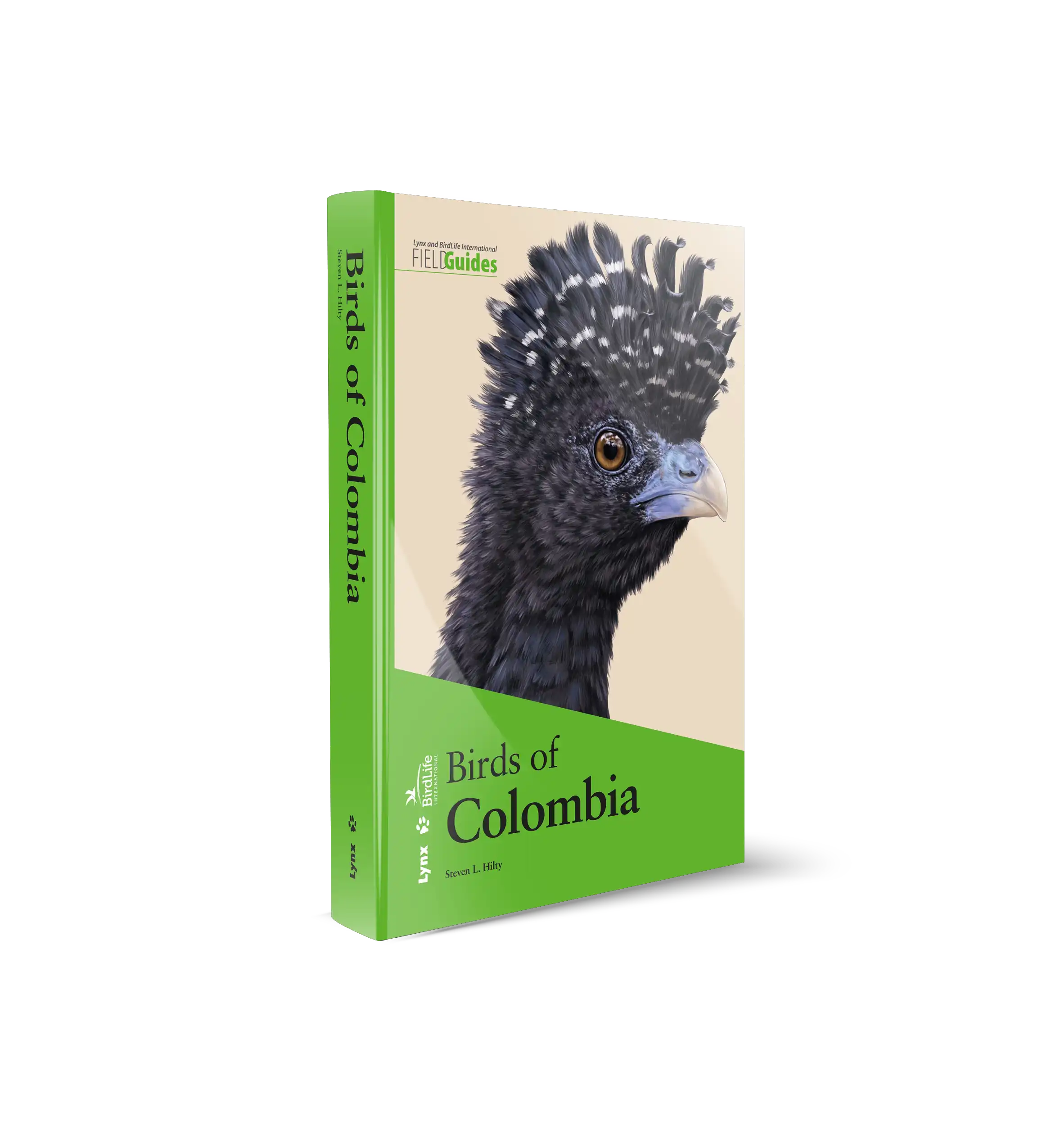
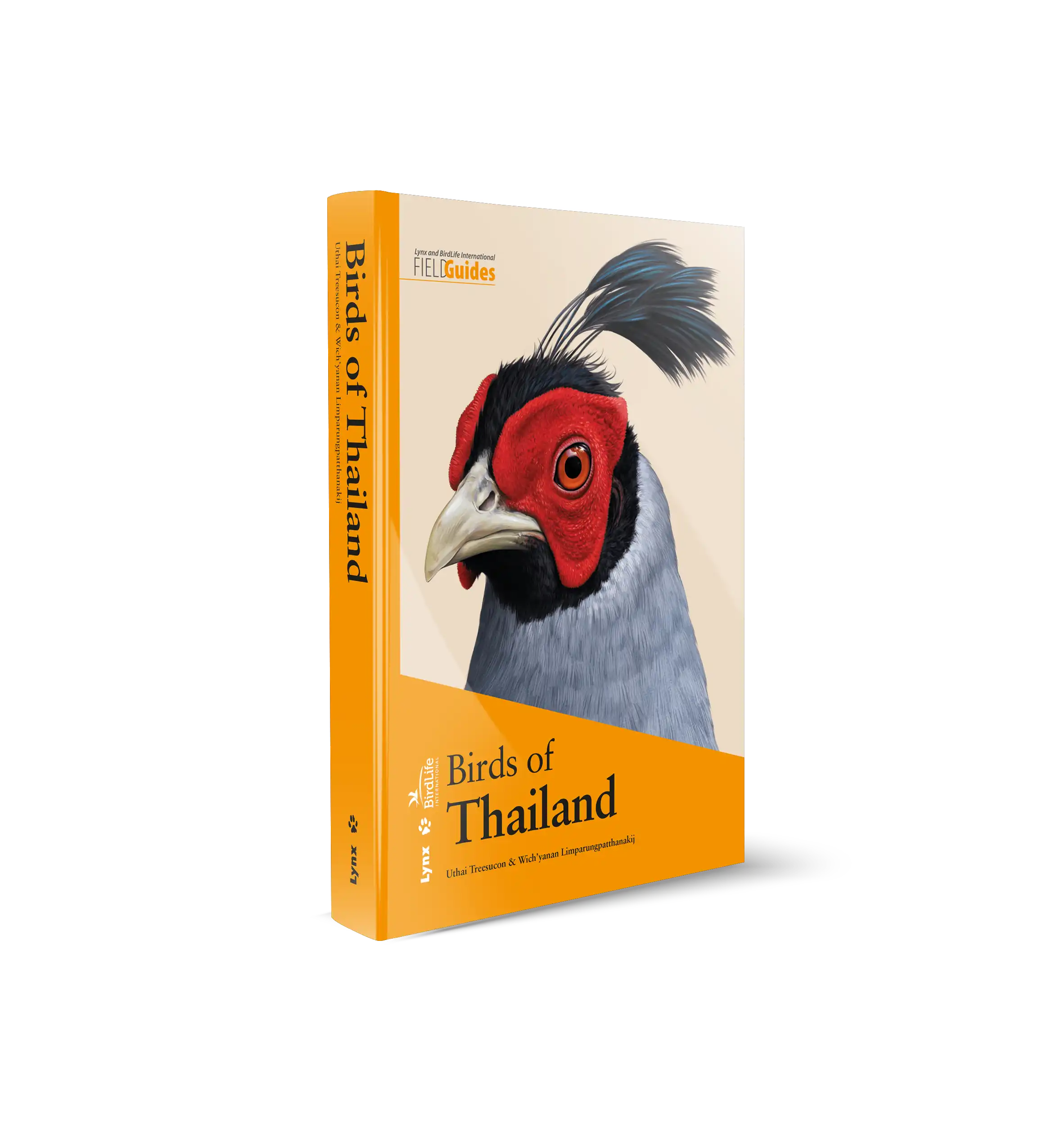
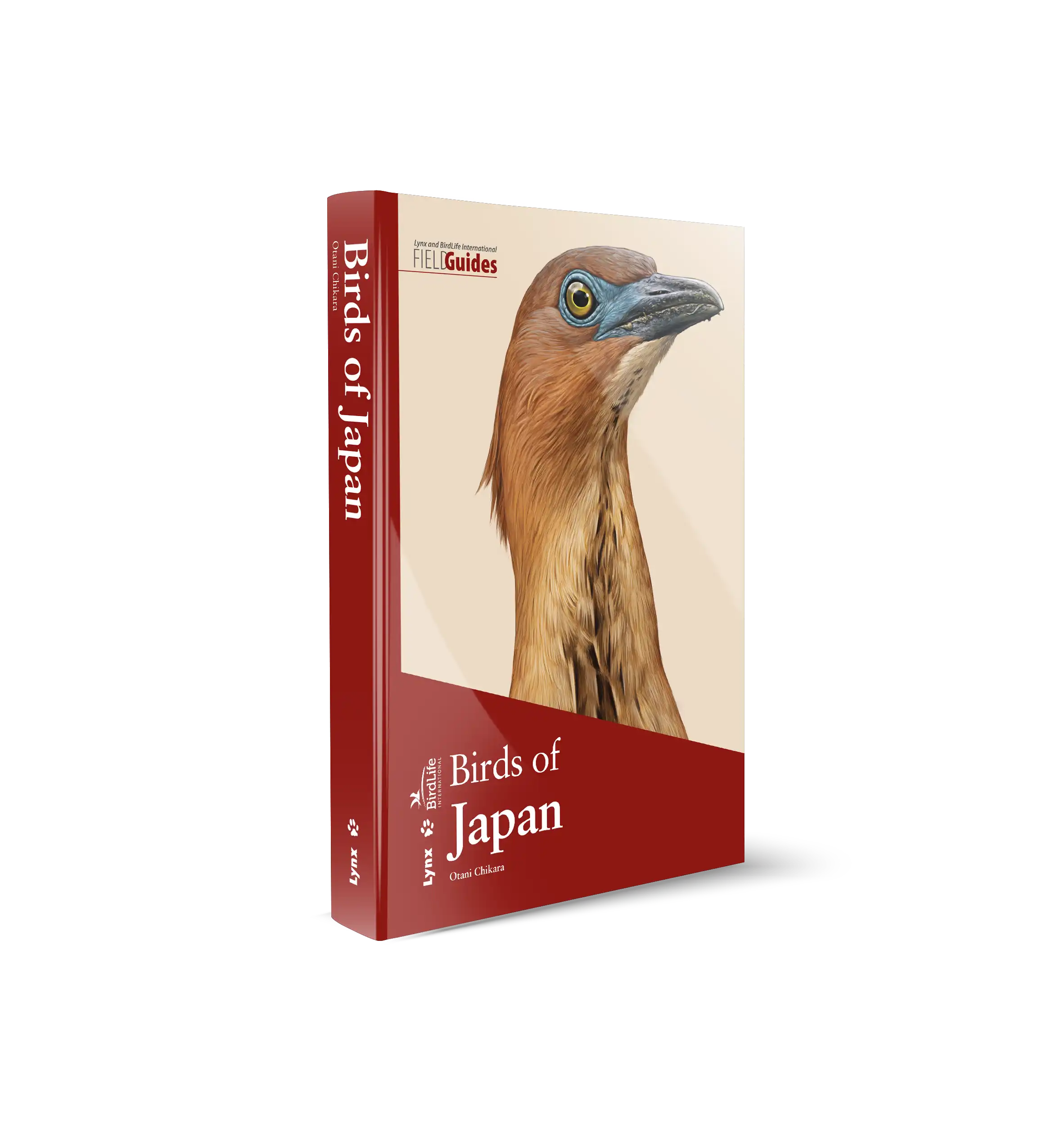








 Copyright 2025 © Lynx Nature Books
Copyright 2025 © Lynx Nature Books
Gehan de Silva Wijeyeratne –
This is the second volume in a series that is a spin-off from the monumental Handbook of the Mammals off the World (HMW). It is a useful addition to the growing literature on mammals of this part of the world and especially so as it is the first book to provide an illustrated reference to all of the mammals in this region. Furthermore, the taxonomy is up-to-date. This region has the highest number of mammals after Africa, reinforcing the usefulness of this guide which covers 540 species. The geographical area covered by this book spans a group of countries referred to as South Asia but as the brief three page introduction points out, this area is better referred to as South Central Asia. All of the countries in this region were on the Indian tectonic plate which collided with mainland Asia on the Eurasian tectonic plate about 55-25 million years ago. This created the towering Himalayas and a region which is very varied physically from ice clad mountains to dry deserts to lush rainforests close to the equator.
Although I now live and work in London, I grew up in Sri Lanka and not surprisingly I am a great fan of this book as it fills a gap for a portable and affordable book that covers all of the species. The editorial team is careful to point out that this is an illustrated checklist that aims to show at a glance the species in a family found in the region. The caveating is good as although the quality of the text and illustrations surpasses many field guides published in the past, in this day and age expectations from a field guide are higher. Readers expect more images and text to help tell apart difficult species. However, I do see it taking on the role of a field guide in the absence of a local field guide. Furthermore, with the majority of the larger, diurnal mammals it would be adequate. However, with groups such as shrews, bats and mice, which represent a significant proportion of the mammalian fauna, it will require a skilled naturalist photographer to take ID oriented photographs alongside mammal trapping (which would require research permits) to produce a book that would be sufficiently detailed to work as a field guide. Or else it will require a highly skilled natural history artist to produce a number of accurate and detailed illustrations. When it comes to cetaceans, a field guide which is to be of practical use requires a series of images taken with the animal surfacing to help whale watchers identify species. I recently completed a ‘A Naturalist’s Guide to the Mammals of Sri Lanka’ which covers 96% of the mammals recorded in Sri Lanka. I extensively used photographs from small mammal researchers to illustrate the book. Many species of bats had three to five photographs each to illustrate ID characters. In the Illustrated checklist most species have only one illustration. If a similar treatment had been adopted, the checklist would be heavy and expensive and be anything from 500 -750 pages.
However, if you take this book for what it is and approach it with reasonable expectations, it is a useful book. Let’s say hypothetically a superb field guide exists for Southern India. I would still take this book on a trip to that part of India as it is useful to see in the Illustrated Checklist how for example the ranges of the Northern Palm Squirrel and Indian Palm Squirrel overlap. Browsing the checklist beforehand alerts you as to which ID characters to look for and to photograph in the field when you encounter species that could be confused with another. The layout in this book is similar to the preceding title in the series. Each species has brief text which covers identification, habitat, distribution, with typically a single illustration and a distribution map with the text. It’s a slight departure from the popular field guide format which has a facing plate of illustrations. But this layout is more space efficient and allows six to eight species to be covered in a double page spread.
The distribution maps which derive from the authoritative HMW are fascinating and lead one to ask questions. Why are hedgehogs absent from Sri Lanka? If the Golden Jackal made it into Sri Lanka, why is the Indian Fox absent? The Illustrated Checklist can also be a trip planner. If you are a wolf fan and would like to see a Grey Wolf in South Asia, which part of India should you target? One caveat; in the absence of quadrat based recording schemes and a huge amount of survey effort, the maps are not very precise and should be interpreted as indicative. The maps may have the occasional omission (e.g. Hog Deer has a population in Sri Lanka). It will take several decades of field work for the situation with the maps to improve.
Fifty-six families of mammals (including the introduced camels) are covered in this slim volume and it will be an eye opener to many people in the region as to how rich South Asia is for mammals. It is a very good starting point to inspire locals to take an interest in the mammals in the region and I am sure it will inspire young people to pursue a career in zoology. In countries such as India as the economy grows, more people are able to afford state-of-the-art digital photographic gear. Amateur wildlife photographers will be inspired by books like this to take more pictures of the smaller and more elusive mammals. This in turn will help authors and publishers of more detailed photographic field guides. Lynx Edicions are a remarkable and evolving publishing story that have combined science with a sustainable model of commercial publishing. I suspect in time to come, the Illustrated Checklists may pave the way for full-blown country specific field guides combining illustrations with photographs in the way in which the Helm Identification guides have developed for family monographs. The efforts of Lynx Edicions to improve science through publishing will improve the skill set which all publishers draw upon and help the natural history publishing industry to grow their business. It will also help to grow wildlife tourism which ultimately will be key to conservation as conservation works best when it is aligned to an economic agenda. Anyone with an interest in the mammals of South Asia will find this book a useful addition to their bookshelf.